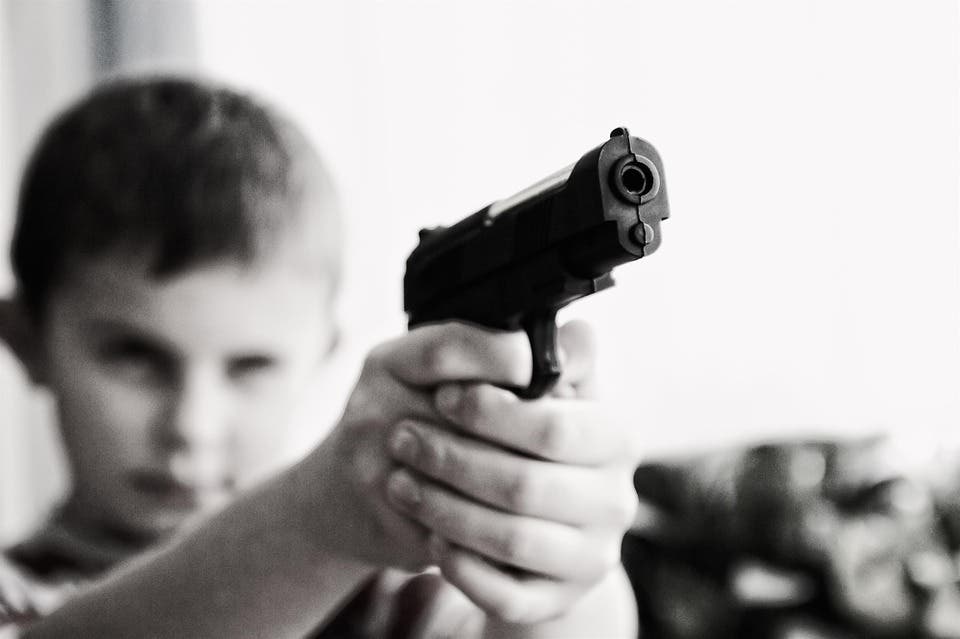
An estimated 19 children die or are medically treated in an emergency department for a gunshot wound in the U.S. each day, according to researchers at the Centers for Disease Control and Prevention in Atlanta. Injuries incurred from gun-related accidents, homicides or suicides are now the third-leading cause of death in the nation.
“These are preventable injuries that have a major public health impact on early death and disability among children,” lead author Katherine A. Fowler, Ph.D, in a statement.
The CDC researchers combed through three national databases to look for trends in gun-related injuries and deaths among children occurring between 2002 and 2014. These were the National Vital Statistics System, the National Electronic Injury Surveillance System, and the National Violent Death Reporting System.
[panel style=”panel-warning” title=”Gun-related child fatalities — the main findings” footer=””]
- 5,790 children in the United States receive medical treatment in an emergency room each year for a gun-related injury;
- On average, 1,297 children died annually from a gun-related injury in the US;
- Between 2012 and 2014, most gun-related fatalities were homicides (53 percent) while 39 percent were suicides. Remaining deaths were classed as accidents, law enforcement shootings, firearm deaths of ‘undetermined intent’;
- 82 percent of the fatalities were boys;
- The most likely children to die in shootings were older, male, black children;
- The rate of gun-related homicides and suicides among children ages 13 to 17 was 12 times higher than the rate among children younger than 13;
- The mortality rate among black children was 10 times higher than the rate among non-Hispanic white children and Asian/Pacific Islander children;
- Gun-related suicides increased by 60 percent between 2007 and 2014;
- The highest rates of gun-related homicides involving children were seen in the South and Midwest;
[/panel]
These disturbing stats highlight the need for more evidence-based solutions to a rising public health problem. The CDC researchers recommend implementing programs aimed at helping children manage their emotions and develop coping skills. This could be anything from street outreach, school programs, or some other novel therapeutic approach. Poverty is also a big factor. The last decade has been marked by a sharp increase in homicides of all ages in Chicago where the top five communities in terms of homicide rates had 37 percent of the population living below the poverty line, compared with 23 percent citywide. Parents also need to be made more aware of the perils of having guns around the house that aren’t properly secured.
“Excellent information can be shared on safe storage and locking methods that still allow quick access to a handgun if it were ever needed,” commented Dr. Eliot Nelson of University of Vermont Children’s Hospital in an accompanying editorial to the paper published in Pediatrics.
“And finally, given the impulsivity, risk-taking, and unpredictability of adolescence, we should promote safe storage as a routine measure. It may help to remind ourselves and our parents that our message on safe gun storage in homes with children is similar to that of gun rights and sport shooting groups,” he wrote.
Finally, though the issue is absolutely blasphemous for many, gun control inevitably has to be included in the discussion. In the United States, there were 14,022 homicides in 2011, 11,101 of which were committed with firearms. Last year, the largest study of its kind — a meta-analysis of 130 published papers — found strong evidence that a strict gun control policy (i.e. banning automatic rifles, making background checks, requiring permits and license for firearms) reduces gun related deaths, both homicides and suicides. Gun control is also associated with fewer cases of domestic shootings or accidental infant mortality by firearm.
“This might have been a suicide, this might have been a homicide; we’re not exactly sure. All I can tell you is that it was a fatal gunshot wound,” said Mark Kaplan, professor of Social Welfare at the UCLA Luskin School of Public Affairs on Jan. 26, 2017during the Public Child Welfare Seminar series.
“The reason for putting this up is because quite often the discussion about guns is sanitized.” Kaplan explained, “We often treat the issue of gun violence as an abstraction but when you talk to people who are working in emergency departments, when you talk to coroners and medical centers, this is what people tell you. This is the net effect of guns.”
Scientific Reference: Fowler KA, et al. Pediatrics. June 19, 2017. https://doi.org/10.1542/peds.2016-3486






